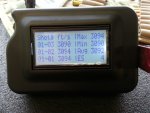I'm seeing SD of about 25 fps and ES that hovers around 45-50 fps.
I've had a couple folks double check my loading processes, and the consensus is that all is in correct order there.
Caliber is .260 Remington. Gun is LMT MWS with factory 20" SS barrel. Load is 123gr Scenar, 42gr H4350, SSA brass, and Remington 9 1/2 LRP.
Assuming all the rest is as close to equal as I can measure, how much can the primer affect velocity?
I've had a couple folks double check my loading processes, and the consensus is that all is in correct order there.
Caliber is .260 Remington. Gun is LMT MWS with factory 20" SS barrel. Load is 123gr Scenar, 42gr H4350, SSA brass, and Remington 9 1/2 LRP.
Assuming all the rest is as close to equal as I can measure, how much can the primer affect velocity?
Last edited:




